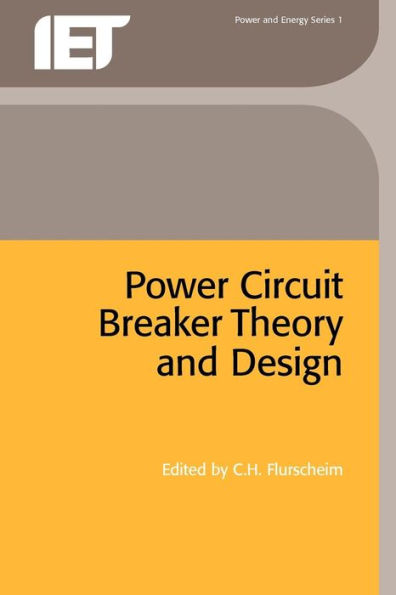Designers need to have an understanding of the parameters of power systems in which circuit breakers have a duty; of the physics of the arc produced during the interrupting process; of electrical engineering which is concerned with the insulation co-ordination and design problems; of mechanical engineering on which the performance and reliability of the operation of the circuit breaker depend; and of the need to meet cost-effective criteria.
Perhaps because of the wide range of techniques involved, there has until now been very little co-ordinated information available in a form suitable for use at universities and for providing subsequent guidance for postgraduate purposes; and for engineers who are concerned with design, system engineering or the use of circuit-breakers, who may need to have, in varying degrees, an understanding of the design problems involved in circuit breakers.
The approach in editing this book has been to invite eminent engineers concerned with circuit breakers to write chapters in areas that are of special interest to them. It has therefore been planned with chapters covering defined subjects. All of the authors are, or have recently been, occupying senior positions in the power circuit breaker industry.
Designers need to have an understanding of the parameters of power systems in which circuit breakers have a duty; of the physics of the arc produced during the interrupting process; of electrical engineering which is concerned with the insulation co-ordination and design problems; of mechanical engineering on which the performance and reliability of the operation of the circuit breaker depend; and of the need to meet cost-effective criteria.
Perhaps because of the wide range of techniques involved, there has until now been very little co-ordinated information available in a form suitable for use at universities and for providing subsequent guidance for postgraduate purposes; and for engineers who are concerned with design, system engineering or the use of circuit-breakers, who may need to have, in varying degrees, an understanding of the design problems involved in circuit breakers.
The approach in editing this book has been to invite eminent engineers concerned with circuit breakers to write chapters in areas that are of special interest to them. It has therefore been planned with chapters covering defined subjects. All of the authors are, or have recently been, occupying senior positions in the power circuit breaker industry.

Power Circuit Breaker Theory and Design
628
Power Circuit Breaker Theory and Design
628Paperback(REVISED)

Product Details
| ISBN-13: | 9780906048702 |
|---|---|
| Publisher: | The Institution of Engineering and Technology |
| Publication date: | 06/30/1982 |
| Series: | Energy Engineering |
| Edition description: | REVISED |
| Pages: | 628 |
| Product dimensions: | 6.14(w) x 9.21(h) x (d) |
